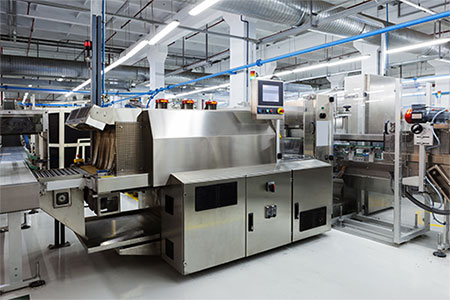Across many industries today we are tightly connected as never before. Machine-to-Machine (M2M) devices and their innate power to communicate are transforming the way every business in every industry operates today, proving to save companies time, money and resources.
How It Works
When you boil it down to the basics, M2M communication is all about sensors. With M2M, the machines do all the talking. M2M communications employs a device (e.g., sensor) to capture an event (e.g., oil spill), which is relayed through a network (e.g., wireless, wired or hybrid) to an application (software program), translating the captured event into usable and actionable information(e.g., site requires attention). 
Transforming Industries
Today’s businesses, across various industries, are facing enhanced regulatory pressure, heightened environmental concerns and tighter security requirements. Technologies that can help securely maintain systems and provide efficient and remote monitoring and management will ultimately improve overall business processes. But until recently, traditional solutions for monitoring and measuring have typically required some level of physical intervention -- such as periodic on-site visits -- often requiring the use of specialized measuring devices controlled by operators trained in their use and how to interpret the readings. The information collected during this manual intervention was then communicated to a technical authority who determined the appropriate course of action required. These solutions are based on reactive and time consuming processes, and often cannot detect anomalies or exceptions that could prove disastrous until after an event occurs.
Real-time visibility across all touch points is absolutely essential to modern business, and that’s where M2M comes into the mix. The number of cellular M2M connections will more than triple by the end of 2017, according to a recent white paper entitled, “MNO Strategies in the Cellular M2M Market” from IHS Inc. With the rapid growth of wireless networks – from cellular/satellite to Wi-Fi to sensor networks – the ability to connect smart devices for increased value creation is rapidly growing.
Let’s look at one example of how M2M sensors have transformed the oil and gas industry.
Twenty percent of U.S. oil production stems from marginal well operations (often companies with three to five wells on a property producing 25 barrels or less per day). Management of these sites is a very high touch, labor intensive process: operators drive to each site at least once a day to see if water and oil tank levels have gotten too high and check the equipment. If something is wrong, they must call a pumper and often manually shut down the pump and halt production to avoid a spill and incur the cost of fines and cleanup. Maintaining motors at drilling operations can be a problem, too. When the operator discovers a motor problem during the daily checkup, he may not have the right parts on hand in the truck to fix it, shutting down the oil well until repairs can be made.
Cutting edge oil producers are turning to M2M technology to help manage the production procedures, reduce spills and avoid costly fines. As example, Numerex’s AVIDdirector offers marginal well producers efficient 24/7 remote M2M monitoring, control and alerts. It uses small, self-contained, industrial wired and wireless sensors that can be used virtually anywhere to monitor various processes or applications. You can combine multiple sensors to provide an instant sensor network that can handle any remote sensor requirement. Via an online dashboard, pumpers can monitor and operate tanks, motors and other equipment anywhere from a PC or smartphone. The AVIDdirector collects the information from the site equipment and analyzes the data to determine if a change or an important event has occurred. The information is transmitted to the M2Mgateway and into the database where the system will activate the appropriate alerts via text message or email to field operators. From there, operators can send control signals wirelessly to turn pumps and motors off or on.
Asset Management and Security
In another industry example, M2M has become a critical component in asset tracking. With M2M in place, companies can answer critical questions about the asset such as “who has it” and “what is it doing,” not just “where is it?” Using more information than just “dots on a map” is true asset management. By using smart software applications and tying all of that information back to customer relationship management in a meaningful way, companies using M2M solutions have a key logistical advantage. The solution doesn’t take the human element out of the picture, but provides the data to make more informed and quicker decisions. Ultimately, when your logistics are optimized and customers are happy, that’s when you are able to convert assets to cash.
A secondary benefit is loss prevention. The ability to track the real-time location of expensive assets helps squeeze the maximum amount of value out of them by enabling them to be used time and again without loss. In the process, logistics personnel are saved from wasting valuable labor hours trying to locate and recover assets spread far and wide across the supply chain.
In conclusion, M2M solutions allow businesses to be proactive rather than reactive. The use of this technology can have a significant impact on various areas of today’s enterprise including:
- Improved efficiencies of monitoring and measuring critical assets such as vehicles, fleets, tanks, tankers, utilities, pipelines, oil rigs.
- Enhanced security and supply chain fidelity.
- Reduced cost by eliminating or reducing unnecessary on-site visits and enabling exception based management.
- Reduced environmental impact by alerting businesses and governments to potential hazardous spills or leaks.